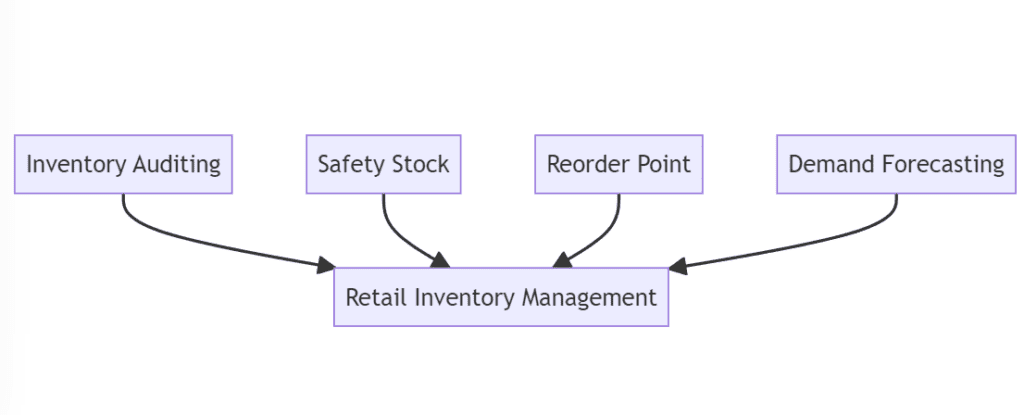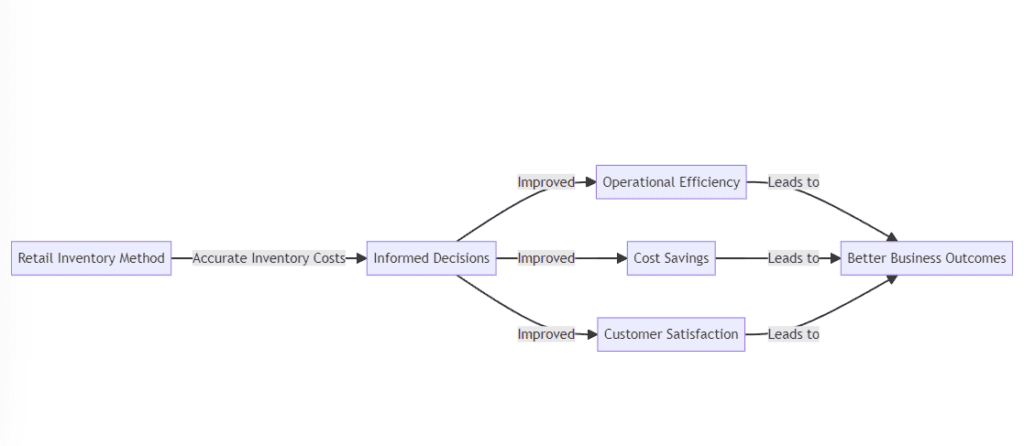
Retail inventory management is a cornerstone of retail business success, offering a clear pathway to optimized cost management, streamlined operations, and elevated customer satisfaction. One integral aspect of this inventory management is the retail inventory method. This method, as an accounting procedure, facilitates the determination of inventory cost value without necessitating a physical count of every single item. The analysis herein critically examines the retail inventory method, providing insights into its structure, advantages, and its implications for contemporary business growth.
The Retail Inventory Method: A Critical Appraisal
The retail inventory method operates on a fundamental formula to ascertain inventory value. This formula employs the cost-to-retail ratio, derived by dividing the total cost of available goods by their total retail value. Applying this ratio to the ending retail inventory value, businesses can accurately calculate their ending inventory at cost.
Inventory Management: An Analytical Breakdown of Key Components
A meticulous analysis of retail inventory management highlights several key components:
- Inventory Auditing: Regular inventory checks or audits ensure the maintenance of precise inventory records. Various methods, such as physical counts, spot checks, or cycle counts, can be employed.
- Safety Stock: The inclusion of safety stock—a surplus inventory kept as a safeguard against unpredictability in market demand or supply delays—acts as a buffer against potential out-of-stock scenarios.
- Reorder Point: The reorder point, a specific threshold of units that initiates a reorder, guarantees consistent stock availability and smooth business operations.
- Demand Forecasting: This process involves predicting customer demand within a set period, enabling businesses to maintain adequate stock levels and circumvent overstock or stockout situations.

Advantages of the Retail Inventory Method: A Detailed Assessment
A closer inspection of the retail inventory method reveals several significant advantages:
- Efficiency: By eliminating the need for physical counting, the method enhances overall business efficiency.
- Cost-effectiveness: The method mitigates resource expenditure on inventory valuation, translating into cost-effective inventory management.
- Flexibility: It equips businesses with the ability to rapidly adapt to inventory level fluctuations, thereby facilitating nimble decision-making processes.
- Risk Mitigation: The accurate depiction of inventory levels allows businesses to reduce the risks associated with stockouts or surplus inventory.
The Retail Inventory Method in Practice: A Look at Business Implications
In practice, the retail inventory method serves as a potent tool for efficient inventory management. By providing an accurate calculation of inventory costs, it enables businesses to make informed, data-driven decisions concerning their stock. This often leads to improved operational efficiency, cost savings, and enhanced customer satisfaction.

Given the current retail landscape’s competitiveness, proficient retail inventory management is no longer an option, but a prerequisite for business survival and growth. The retail inventory method thus becomes an invaluable asset, enabling businesses to align product availability with demand in an optimized fashion.
The Future Implications of the Retail Inventory Method
The pivotal function of the retail inventory method in business management necessitates an examination of its future significance and development potential. Technological advancements and market changes will drive innovative updates to boost the method’s business value.
The Intersection of Technology and Inventory Management
In our increasingly digital world, retail inventory management will become more technology-driven. Artificial intelligence and machine learning could be utilized to automate elements of the merchandise stock valuation technique, including the determination of cost-to-retail ratios and prediction of reorder points. This could increase the accuracy and efficiency of inventory management, ultimately enhancing business performance and customer satisfaction.
AI and Machine Learning: Catalysts for Change
Consider the potential role of artificial intelligence (AI) and machine learning. These technologies could be used to dynamically adjust the cost-to-retail ratio in response to real-time market changes. Furthermore, machine learning algorithms could analyze historical data to more accurately predict future demand and determine optimal safety stock levels.

Enhanced Sustainability Practices in Inventory Management
As businesses become more conscious of their environmental impact, sustainable practices in inventory management will likely become more prevalent. The merchandise stock valuation technique can contribute to these efforts by optimizing stock levels to minimize waste. Moreover, accurate demand forecasting could help businesses avoid overproduction and excess inventory, further reducing their environmental footprint.
The Road Ahead: Future-Proofing Inventory Management
Looking forward, the retail inventory method will likely continue to be an essential tool in merchandise stock valuation technique management. However, businesses must be proactive in updating and refining their approach to stay competitive in an ever-evolving market.
In conclusion, the merchandise stock valuation technique is not just a tool of the present, but a cornerstone of the future. Its potential to be combined with advancing technology and sustainability trends signals a bright future for businesses willing to innovate and adapt their inventory management strategies. Embracing this method signifies a strategic step towards greater business efficiency, profitability, and sustainable growth.